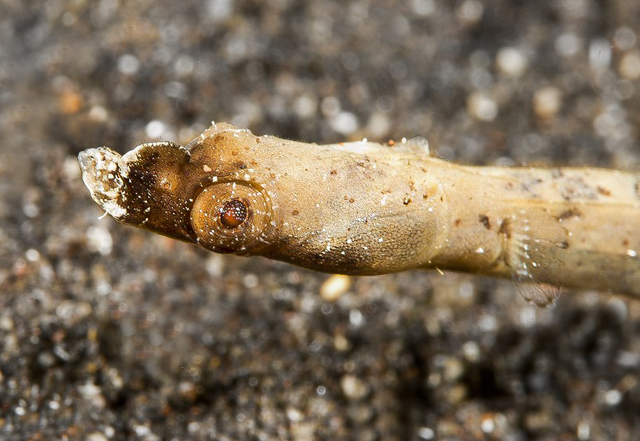| Syngnathidae (Pipefishes and seahorses), subfamily: Syngnathinae |
| 15 cm TL (male/unsexed) |
|
reef-associated; marine; depth range 5 - 25 m |
| Indo-West Pacific: Red Sea to the Solomon Islands, north to southern Japan, south to the southern Great Barrier Reef; Belau [=Palau] and Pohnpei in Micronesia. |
|
Dorsal spines (total): 0-0; Dorsal soft rays (total): 16-20; Anal spines: 0-0; Anal soft rays: 2-3. Brownish to near black in color; tip of snout pale, often with irregular pale bars on dorsum of body (Ref. 4281). Snout short with rounded dorsal ridge, and large eyes (Ref. 48635).
Description: Characterized by mottled brown to pale grey or whitish color, sometimes with 10-11 irregular diffuse pale or dark bars on side and dorsum of body, and ventral surface of trunk rings with dark bars;10 caudal rays; rings 14 + 31 - 36; discontinuous superior trunk and tail ridges; inferior trunk ridge ends at anal ring; lateral trunk ridge confluent with inferior tail ridge; continuous median dorsal snout ridge, elevated and arched, margin usually denticulate; head and body with unbranched filaments; each side of dorsum with palmate skin flaps; length of snout 3.0-4.4 in head length; depth of snout 1.8-3.1 in snout length; head length 9.6-14.7 in SL (Ref. 90102). |
| Collected from sand, rubble, or reef habitats to a depth of at least 14 m. Ovoviviparous (Ref. 205). The male carries the eggs in a brood pouch which is found under the tail (Ref. 205). Also found in coastal algal-rubble slopes in 5-25 m (Ref 90102). |
|
Least Concern (LC); Date assessed: 25 November 2015 Ref. (130435)
|
| harmless |
Source and more info: www.fishbase.org. For personal, classroom, and other internal use only. Not for publication.

